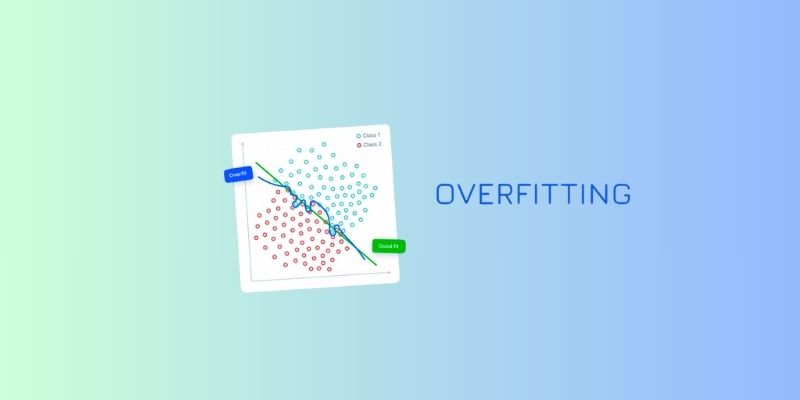Advertisement
Few-shot learning is a smart way to train AI systems using just a few examples. Unlike the usual method, which needs thousands or even millions of labelled pictures, videos, or text to teach an AI, few-shot learning does more with less. It helps machines understand new tasks quickly, just like people often do, by seeing just a handful of samples.
This makes it incredibly useful in real life. However, gathering large datasets isn't always possible if you're working with rare diseases, new languages, or specific customer requests. That's where few-shot learning in machine learning shines. It saves time, cuts costs, and helps AI get smarter without needing a mountain of data.

Think about how you learn something new. If someone shows you three or four pictures of a rare fruit, you'll probably recognize it if you see it again. That's the idea behind few-shot learning. You give the AI a few examples, and it figures out the rest.
The trick is that most of these AI models are already trained on much general information beforehand. So, when you show them a few new things, they're not starting from zero. Instead, they connect the latest info to what they already know. This helps the AI model perform the task well without needing to go back and learn everything from scratch.
This ability is what makes the AI model few-shot learning so exciting. It's efficient, quick, and often surprisingly accurate.
Here's the secret behind how few-shot learning works: pre-trained models. These models have already been trained on a huge amount of content—books, web pages, pictures, conversations—you name it.
So, when you need an AI to write legal documents or understand a medical term, you don't start over. You take a pre-trained model, give it a few examples of what you want, and it fills in the rest.
That's why few-shot learning in machine learning has taken off. It allows people and businesses to build custom AI solutions without the long wait or huge data collection effort.
Few-shot learning isn't just something happening in labs or tech papers. It's already making a difference in the real world.
For example, doctors can train an AI to spot rare diseases using only a few medical scans in healthcare. Without a huge database, you can teach AI to translate or understand fewer common dialects in language apps. Even customer service bots can be trained to handle new questions by feeding them a few conversation examples.
That flexibility makes few-shot learning a game-changer. It's helping companies improve accuracy while saving time, especially when data is scarce.
The biggest reason people like few-shot learning are that it cuts down the hard work. You no longer need huge amounts of labelled data to build a decent AI. A few examples are enough to get going.
It also helps when speed matters. Need a chatbot to handle new types of questions tomorrow? With few-shot learning, you can set that up quickly. It's also useful in industries that change fast—like marketing or finance—where waiting to collect data can cost you.
The bottom line is that few-shot learning in machine learning means more work gets done in less time with less hassle. And almost every team can appreciate that.
There are a few types of learning methods in AI. In supervised learning, the model needs tons of labelled examples. In zero-shot learning, the model tries to figure things out without seeing examples based on its general knowledge.
Few-shot learning is the middle ground. It still gets a few examples, so it performs better than zero-shot models. But it doesn't need nearly as much data as supervised learning. That makes it useful when time and data are limited, but you still want decent results.
It's flexible, efficient, and often good enough for real-world applications.
Of course, few-shot learning isn't perfect. One of the main challenges is that its performance can drop if the few examples you give aren't good enough. The AI might learn the wrong thing if the sample is confusing or biased.
Also, few-shot learning can struggle with very complex or subtle tasks. Sometimes, the AI needs more data to fully understand something. Building these systems still takes a certain level of skill, especially when choosing the right examples or setting up the model correctly.
So, while AI model few-shot learning is powerful, it's not always a one-size-fits-all solution. But it's getting better every day.

Few-shot learning is heavily influencing the future of AI. As AI tools like GPT models and other large systems become more advanced, they'll rely more on this method to adapt quickly to new tasks.
The technology is moving toward building models that don't just memorize—they reason, adapt, and learn from just a few hints. Imagine teaching an AI your company's writing style or tone with only three emails or training a personal assistant to schedule your week after seeing one example. That's where things are headed.
Few-shot learning won't replace every method, but it will be a big part of how AI works going forward. Doing more with less is not just smart—it's the future.
Few-shot learning is shaping how we build and work with AI. It's about giving machines just some info and then seeing what they can do. The result? Faster training, less resource need, and smarter AI systems that can adjust quickly. Whether you're a developer, a business owner, or just someone curious about AI, this approach is worth getting the hang of. As more tools use few-shot learning in their machine learning processes, we will see more helpful and smarter AI in our daily lives. So next time someone asks how AI learns from so little, you'll know exactly how to explain it.
Advertisement

Learn how to build a machine learning model in 7 easy steps, from defining the problem to deploying the model.

Discover simple ways to avoid overfitting in machine learning and build models that perform well on real, unseen data every time

Are you curious about how AI models can pick up new tasks with just a little training? Check out this beginner-friendly guide to learn how few-shot learning makes it possible.

Explore how generative AI transforms knowledge management with smarter search, automation, and personalised insights

Discover key differences: supervised vs. unsupervised learning, when to use one or the other, and much more.

How to build a detailed topographic map of Nepal using Python, open-source libraries, and elevation data. A hands-on guide to terrain mapping and hillshading techniques

Top AI hardware vendors join forces to compete with Nvidia and reshape the AI infrastructure market.

Explore the features, key benefits, and real-world use cases of ERP AI chatbots transforming modern enterprise workflows.

Lenovo is transforming industries by bringing generative AI to the edge with powerful hardware and real-time solutions.

Want to launch surveys quickly? Learn how Survicate lets you create and customize surveys with ease, collecting valuable customer feedback without hassle

How can ChatGPT improve your blogging in 2025? Discover 10 ways to boost productivity, create SEO-friendly content, and streamline your blogging workflow with AI.

Explore core concepts of artificial neural network modeling and know how neural networks in AI systems power real‑world solutions